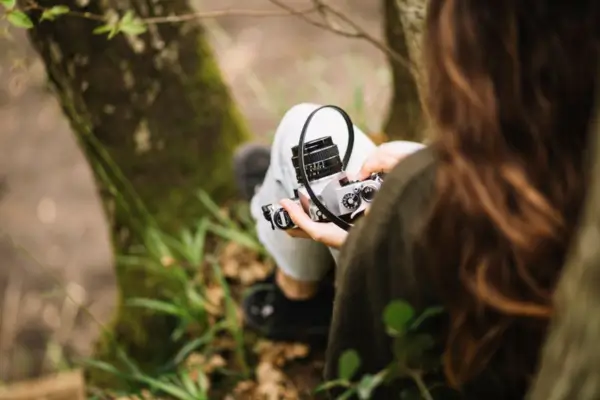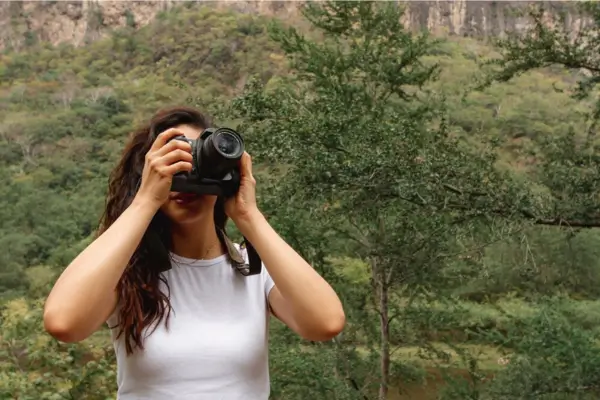As environmental concerns continue to rise, businesses across all industries are looking for ways to minimize their ecological footprint. The photography industry, although often overlooked in sustainability discussions, has its own environmental challenges. From energy-intensive equipment to wasteful printing practices and excessive travel, photographers can unknowingly contribute to pollution and resource depletion.
Embracing sustainable and eco-friendly practices in your photography business not only helps protect the planet but also benefits your brand. By reducing waste, conserving energy, and making conscious choices, you can lower costs, attract environmentally conscious clients, and differentiate yourself in a competitive market. Moreover, sustainability initiatives can enhance your reputation and create positive social impact, helping you build a responsible and future-oriented business.
In this article, we’ll explore practical and effective ways to make your photography business more sustainable. From choosing energy-efficient equipment to adopting eco-friendly printing solutions and reducing your carbon footprint, these strategies will help you transition towards a greener and more responsible business model. Let’s get started!
Choose Energy-Efficient Equipment
As a photographer, your choice of equipment plays a crucial role in making your business more sustainable. By opting for energy-efficient devices, you can reduce your carbon footprint while also saving money in the long run. Here are some key ways to make eco-friendly choices when selecting your photography gear:
Opt for Cameras and Accessories with Lower Energy Consumption
Not all cameras are created equal when it comes to energy efficiency. Some models consume less power than others, allowing you to shoot for longer periods without draining batteries quickly. When investing in a new camera or accessory, look for energy-efficient features such as eco-mode settings, auto power-off, and LED displays, which consume less power than traditional LCDs.
Use Rechargeable Batteries and Solar-Powered Chargers
Disposable batteries contribute significantly to electronic waste, as they contain toxic chemicals that can harm the environment when improperly disposed of. Instead, switch to high-quality rechargeable batteries, which last longer and reduce waste. Consider using solar-powered battery chargers, especially for outdoor shoots, to minimize reliance on electricity. This small change can make a big impact over time.
Buy Second-Hand Equipment to Reduce Electronic Waste
The production of new cameras, lenses, and accessories requires significant natural resources. To lower your environmental impact, consider purchasing second-hand or refurbished photography gear. Not only is this an eco-friendly choice, but it can also save you a substantial amount of money while still providing high-quality results. Many reputable retailers and marketplaces specialize in pre-owned photography equipment that has been tested and certified for performance.
By making mindful choices about your photography equipment, you can take an important step toward running a more sustainable and eco-friendly business. Every small change adds up, contributing to a greener future for the photography industry. 🌿📷

Reduce Paper Waste and Go Digital
In today’s digital era, reducing paper waste is one of the easiest and most effective ways to make your photography business more sustainable. By transitioning to digital tools, you not only minimize your environmental impact but also streamline your workflow and improve efficiency.
Use Digital Contracts and Invoices
Paper-based contracts and invoices contribute significantly to waste, especially for photographers who handle multiple clients per month. Switching to digital solutions like electronic contracts and online invoicing platforms can help reduce paper usage while keeping your documents organized and easily accessible. Platforms like Adobe Sign, DocuSign, or HoneyBook allow you to send, sign, and store contracts electronically, eliminating the need for printing. Additionally, using accounting software such as QuickBooks or FreshBooks for digital invoicing saves paper and makes financial tracking more efficient.
Create Online Portfolios Instead of Physical Albums
Traditional printed portfolios require paper, ink, and binding materials, which have a significant environmental footprint. Instead, consider building a professional online portfolio to showcase your work. Websites like Squarespace, Wix, and Adobe Portfolio offer customizable templates that allow you to present your best images without any physical waste. Digital portfolios are also easier to update and share, providing a more flexible and cost-effective solution.
Avoid Unnecessary Printing and Choose Recyclable Photo Albums
While printed photos and albums are still popular among clients, you can adopt eco-friendly alternatives to make your business more sustainable. Encourage clients to choose digital galleries over printed albums and offer them high-quality USB drives or cloud-based storage options. If printing is necessary, select recycled paper or FSC-certified albums from environmentally responsible suppliers. Look for printing labs that use eco-friendly inks and sustainable production methods to further reduce your environmental impact.
By embracing digital tools and making thoughtful printing choices, you can significantly reduce waste while maintaining a professional and modern photography business. These small changes contribute to a more sustainable industry and show clients that you care about the planet.
Sustainable Printing Practices
As a photographer, offering high-quality prints to your clients is essential. However, traditional printing methods can have a significant environmental impact due to excessive paper consumption, chemical usage, and energy waste. By adopting sustainable printing practices, you can minimize your footprint while still delivering beautiful, high-quality images.
Choose Eco-Friendly Printing Labs
One of the easiest ways to make your photography business more sustainable is by working with eco-conscious printing labs. Many labs now use water-based or soy-based inks, energy-efficient printers, and eco-friendly packaging. Look for companies that prioritize green printing technologies and use responsible waste management systems. Research their sustainability policies to ensure they align with your values.
Use Recycled or FSC-Certified Paper
When printing photo albums, business cards, or promotional materials, opt for recycled paper or FSC-certified (Forest Stewardship Council) paper. FSC certification ensures that the paper comes from responsibly managed forests that promote biodiversity and reduce deforestation. Recycled paper, on the other hand, minimizes waste and requires fewer resources to produce, making it an excellent choice for eco-conscious photographers.
Offer Digital Options to Reduce Print Demand
One of the best ways to cut down on paper waste is by encouraging digital alternatives. Offer high-resolution digital albums that clients can easily access, share, and store without the need for physical prints. You can also provide interactive online galleries where customers can view and download their photos. By promoting digital options, you reduce paper usage while offering a modern, convenient experience for your clients.
Sustainable printing practices don’t mean compromising on quality. By choosing eco-friendly labs, using responsibly sourced materials, and promoting digital alternatives, you can significantly reduce your environmental impact while maintaining the high standards your clients expect. These small changes can make a big difference in preserving natural resources and promoting a greener photography industry.
Eco-Friendly Transportation
Adopting sustainable transportation methods is a key step toward making your photography business more eco-friendly. By reducing unnecessary travel and choosing greener alternatives, you can lower your carbon footprint while still delivering high-quality services to your clients.
Plan Your Shoots Efficiently
One of the simplest ways to minimize transportation-related emissions is to plan your shoots strategically. Instead of making multiple trips, schedule sessions in the same location on the same day whenever possible. This approach not only reduces travel but also saves you time and money on fuel or transportation costs. Additionally, consider virtual consultations with clients to discuss shoot details before meeting in person.
Choose Greener Transportation Options
Whenever feasible, opt for more sustainable ways to get to your shoots. Public transport, cycling, or even walking can significantly reduce your environmental impact compared to driving a personal vehicle. If you frequently travel for work, investing in an electric or hybrid car can be a great long-term solution. Additionally, ridesharing with clients or colleagues can further cut down on emissions.
Support Local Suppliers and Venues
Working with local vendors, print labs, and event venues can greatly reduce the need for long-distance transportation of photography-related materials. By sourcing products and services from nearby businesses, you not only support the local economy but also decrease fuel consumption and packaging waste. When scouting locations for shoots, prioritize venues that implement sustainable practices and are easily accessible by eco-friendly transport options.
By incorporating these eco-conscious transportation habits into your photography business, you can contribute to a healthier planet while also improving efficiency and reducing costs. Small changes in how you move from one shoot to another can make a big difference in building a more sustainable business.

Sustainable Packaging and Delivery
As a photographer, delivering physical products like prints, albums, and USB drives is often an essential part of your business. However, traditional packaging materials—such as plastic wraps, foam padding, and excessive cardboard—contribute significantly to environmental waste. By adopting sustainable packaging and delivery practices, you can reduce your ecological footprint while appealing to eco-conscious clients.
Use Recycled or Biodegradable Packaging for Physical Products
Choosing recycled or biodegradable materials for packaging is a simple yet impactful step toward sustainability. Opt for packaging made from 100% recycled paper, biodegradable cardboard, or plant-based materials. Many eco-friendly suppliers offer packaging that not only protects your products but also decomposes naturally, leaving little to no waste behind.
For albums, consider wrapping them in organic cotton fabric or recyclable kraft paper instead of plastic sleeves. If you send digital files on USB drives, look for wooden or bamboo alternatives rather than plastic models. These small changes contribute to a more sustainable workflow.
Avoid Single-Use Plastics and Opt for Compostable Materials
Single-use plastics, such as bubble wrap, plastic bags, and synthetic tape, are among the most harmful waste products. Instead, consider using:
- Compostable mailers made from cornstarch or other plant-based materials.
- Recyclable paper tape instead of plastic tape.
- Shredded recycled paper or mushroom-based packaging as cushioning material instead of Styrofoam.
By making these swaps, you can ensure your packaging is either reusable, recyclable, or compostable, making it much more environmentally friendly.
Reduce Cardboard Use and Offer Carbon-Neutral Delivery Options
Excessive cardboard packaging not only adds to waste but also increases shipping costs. To minimize unnecessary materials:
- Choose right-sized boxes that fit your products perfectly, reducing the need for excess fillers.
- Work with suppliers that use minimal or sustainable packaging for their shipments.
- Offer digital-only products whenever possible to eliminate the need for physical delivery altogether.
For deliveries, consider using carbon-neutral shipping options, which offset the carbon emissions generated during transportation. Many courier services, like UPS, DHL, and FedEx, offer sustainable shipping programs that allow businesses to compensate for their environmental impact.
By making sustainable choices in packaging and delivery, you not only reduce waste but also show your clients that you care about the environment. This can be a strong selling point, attracting eco-conscious customers who appreciate businesses that align with their values. Taking these steps will help make your photography business greener, one package at a time! 🌱📦
Offset Your Carbon Footprint
Running a photography business inevitably has an environmental impact, from energy consumption to transportation emissions. However, you can take steps to offset your carbon footprint and make your business more sustainable.
Contribute to Reforestation or Carbon Offset Programs
One of the most effective ways to balance your carbon emissions is by supporting reforestation projects. Trees absorb carbon dioxide, helping to reduce greenhouse gases in the atmosphere. Many organizations, such as One Tree Planted or The Nature Conservancy, allow businesses to donate towards tree-planting initiatives.
Additionally, consider investing in carbon offset programs that support renewable energy, sustainable agriculture, and clean water initiatives. Companies like Gold Standard and Climate Neutral offer verified offset programs that help counteract your business’s emissions.
Support Local and Global Environmental Initiatives
Beyond carbon offsetting, you can make a difference by actively supporting environmental organizations. Partner with local conservation groups that work to protect natural habitats, reduce plastic waste, or promote eco-friendly practices.
You can also engage with global movements that align with your brand’s values. For example, you could:
- Donate a percentage of your earnings to eco-focused charities.
- Participate in community clean-up events.
- Use your photography skills to raise awareness about environmental issues.
By integrating sustainability into your brand, you not only contribute to a greener future but also attract eco-conscious clients who value businesses with ethical practices.
Calculate and Reduce Your Carbon Footprint
Before offsetting your emissions, it’s helpful to measure your business’s carbon footprint. Online tools like CarbonFootprint.com and Pawprint allow you to estimate how much CO₂ your business activities generate, from energy use to travel.
Once you have a clear understanding of your impact, look for ways to reduce your emissions before offsetting them. Simple actions include:
- Switching to renewable energy providers for your office or home studio.
- Choosing LED lighting and energy-efficient equipment.
- Limiting unnecessary travel by offering virtual consultations.
- Using sustainable suppliers for prints, packaging, and office materials.
By prioritizing reduction before offsetting, your business can genuinely work towards becoming carbon-neutral while still delivering high-quality photography services.

Educate and Inspire Clients
One of the most impactful ways to promote sustainability in your photography business is by educating and inspiring your clients to make eco-friendly choices. When customers understand the environmental impact of traditional photography practices, they are more likely to support and appreciate your sustainable initiatives.
Communicate Your Sustainable Practices
Be transparent about the steps you take to reduce your carbon footprint. Highlight your commitment to sustainability on your website, social media, and during client consultations. Whether you use eco-friendly packaging, energy-efficient equipment, or carbon-neutral printing options, make sure your clients know how these choices contribute to a greener planet. You can also include a dedicated “Sustainability” page on your website to showcase your efforts and explain why they matter.
Encourage Eco-Friendly Choices
Guide your clients toward more sustainable options. For example, instead of printed albums, offer high-quality digital galleries that they can easily share with family and friends. If they prefer printed products, recommend sustainable alternatives, such as recycled paper prints or albums made with eco-friendly materials. Small suggestions like these can help reduce environmental impact while maintaining the quality and beauty of their cherished memories.
Create Educational Content
Position yourself as an advocate for sustainability by sharing educational content related to eco-friendly photography. Write blog posts, create social media content, or even start a newsletter covering topics like:
- The benefits of digital photography over printed materials.
- How clients can store and showcase digital photos in an eco-friendly way.
- The environmental impact of traditional photography and how the industry is evolving.
By consistently sharing knowledge, you not only inform your audience but also build trust and credibility as a photographer who truly cares about the planet.
Encouraging sustainable practices among your clients doesn’t just help the environment—it also sets your business apart as a responsible, forward-thinking brand that aligns with the values of today’s eco-conscious consumers.
Conclusion
Sustainability in photography is not just a trend—it’s a responsibility. By making conscious choices, you can significantly reduce your environmental impact while also appealing to eco-conscious clients. In this article, we explored several ways to make your photography business more sustainable, including using energy-efficient equipment, reducing paper waste, adopting eco-friendly printing practices, minimizing travel emissions, and choosing sustainable packaging.
Implementing even a single change—such as switching to digital contracts, using rechargeable batteries, or partnering with green suppliers—can make a difference. Small steps lead to big impacts, and collectively, photographers can contribute to a more sustainable industry.
Now is the time to take action. Evaluate your current business practices and identify areas where you can incorporate eco-friendly alternatives. Whether it’s reducing waste, offsetting your carbon footprint, or educating your clients about sustainability, every effort counts. Start today and make sustainability a core part of your photography business!
